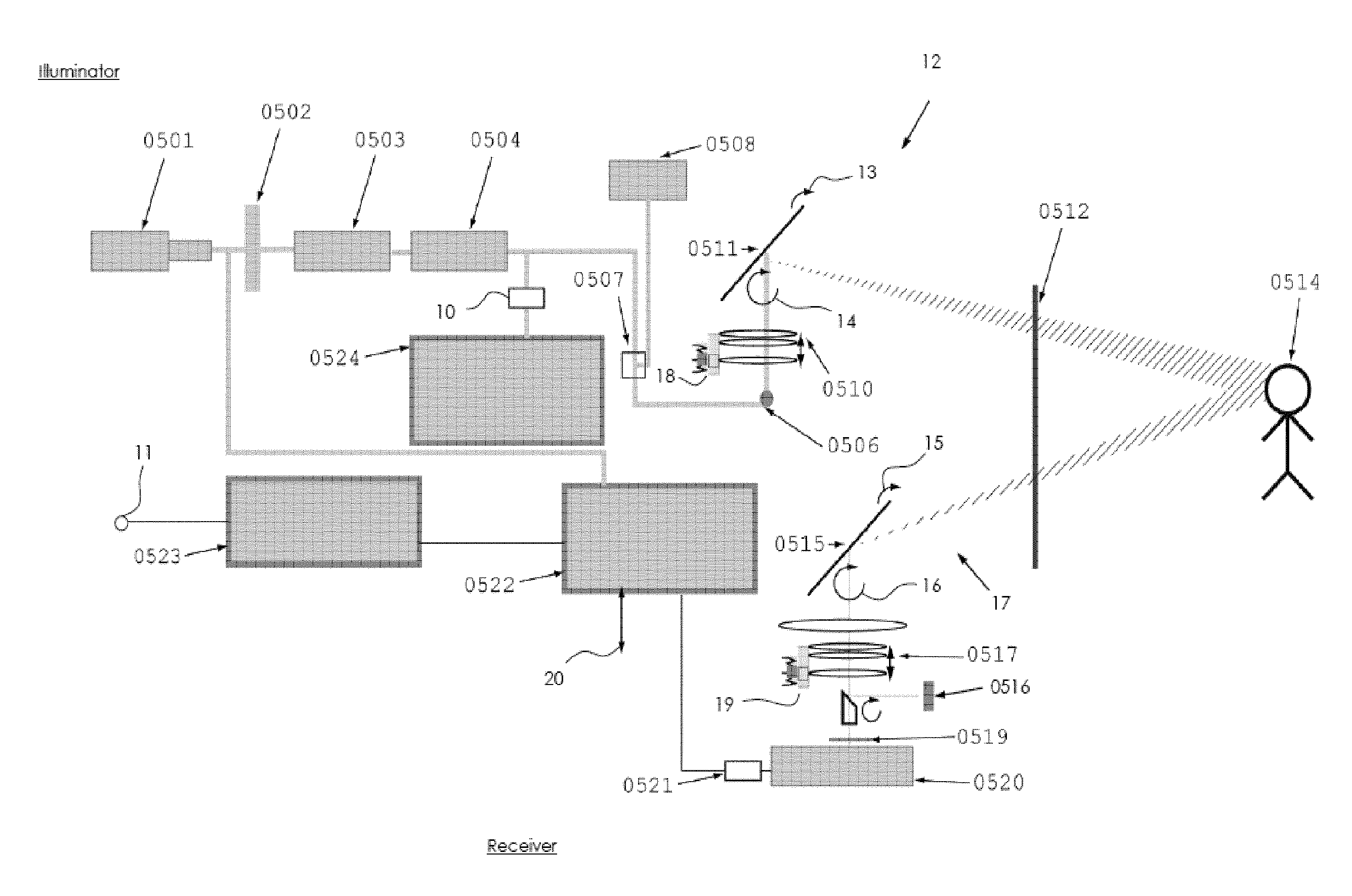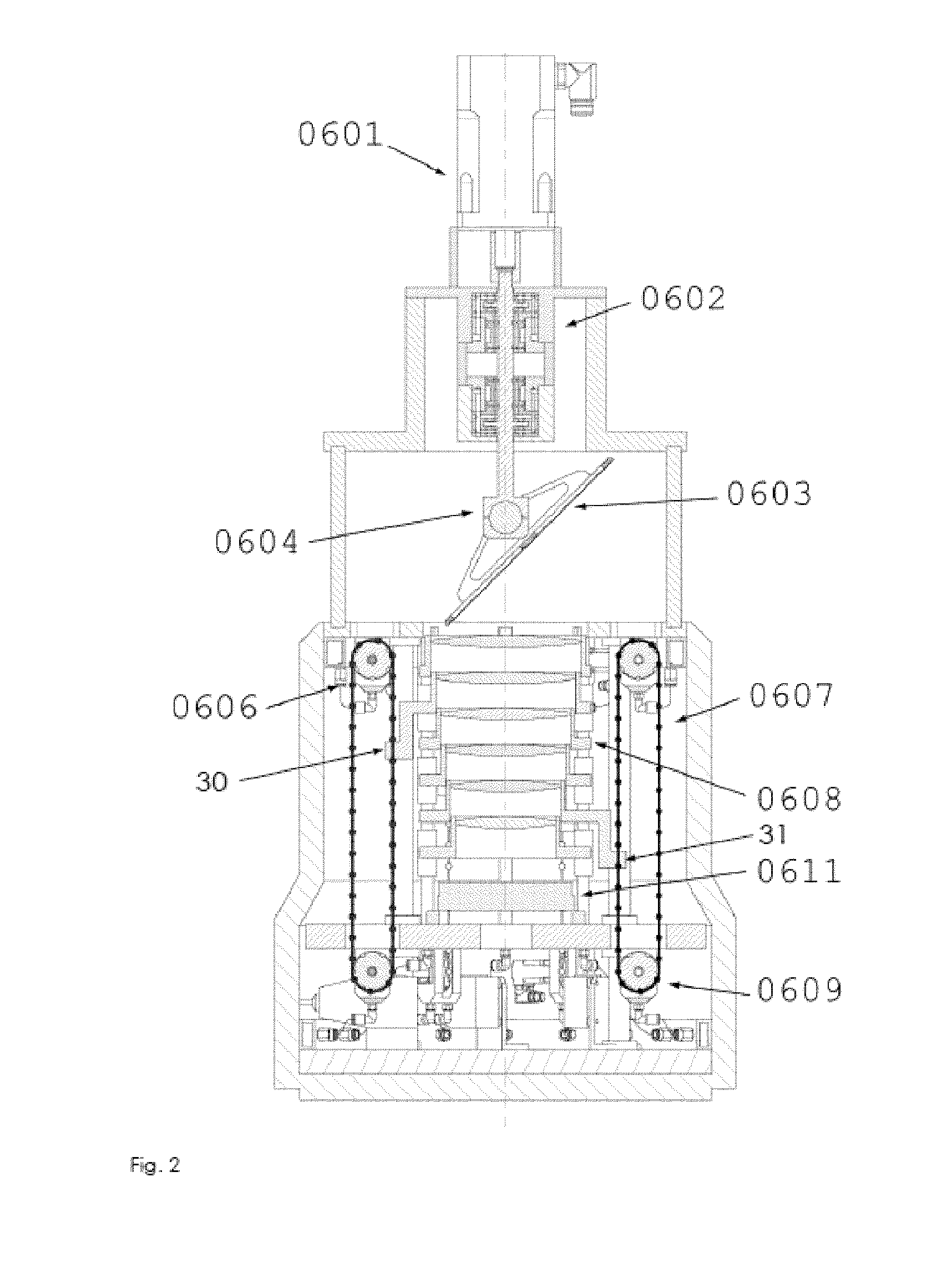2d/3d real-time imager and corresponding imaging methods
a real-time imager and imager technology, applied in the field of real-time imagers, can solve the problems of limiting the capability of moving targets, limiting the achievable frame rate, and significant speed limits of 3d sensors, and achieve the effect of improving the speed, distance and resolution capabilities
- Summary
- Abstract
- Description
- Claims
- Application Information
AI Technical Summary
Benefits of technology
Problems solved by technology
Method used
Image
Examples
Embodiment Construction
[0039]As it is represented in FIG. 1, the real-time imager of the present invention comprises at least one illuminator and at least one receiver. The optical detector part is represented here at 0520. It is part of the receiver. A main function of the receiver is to convert the output of the detector into an electronic image signal which can be displayed on a screen, and / or stored or transmitted to a computer which uses the imaged scene. Some front-end image processing will also be done as part of the receiver.
The illuminator
[0040]The illuminator produces an illumination pattern on the scene. That pattern is generated with a series of ultra-short laser pulses from at least one source. The means for generating ultra-short laser pulses comprise:[0041]preferably a mode-locked laser source which continuously generates low-jitter pulses with a controlled low optical average power;[0042]a modulator which forms programmed sequences of the generated pulses by removing some of the pulses;[00...
PUM
 Login to View More
Login to View More Abstract
Description
Claims
Application Information
 Login to View More
Login to View More - R&D
- Intellectual Property
- Life Sciences
- Materials
- Tech Scout
- Unparalleled Data Quality
- Higher Quality Content
- 60% Fewer Hallucinations
Browse by: Latest US Patents, China's latest patents, Technical Efficacy Thesaurus, Application Domain, Technology Topic, Popular Technical Reports.
© 2025 PatSnap. All rights reserved.Legal|Privacy policy|Modern Slavery Act Transparency Statement|Sitemap|About US| Contact US: help@patsnap.com



